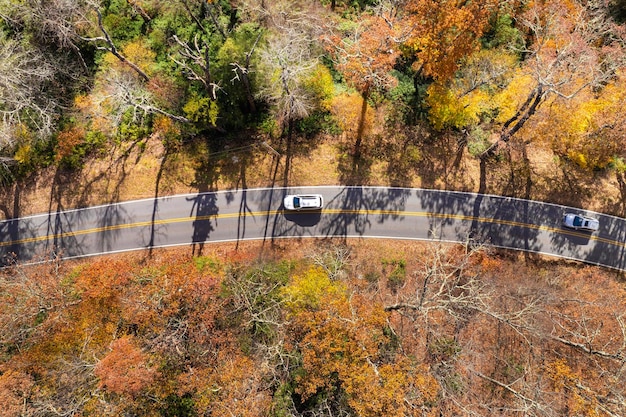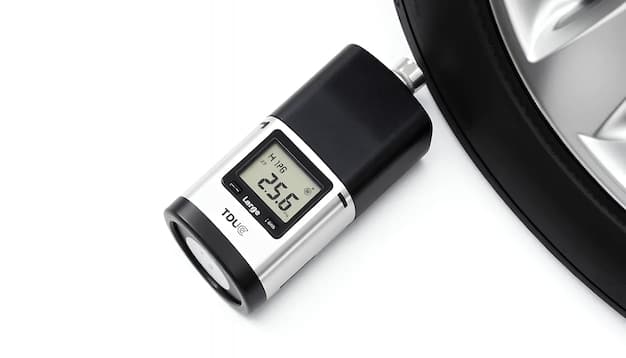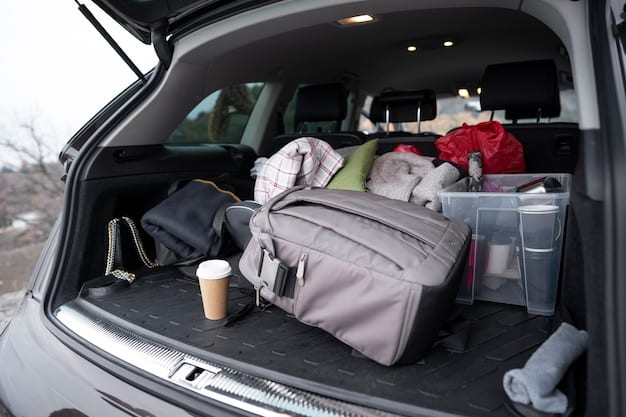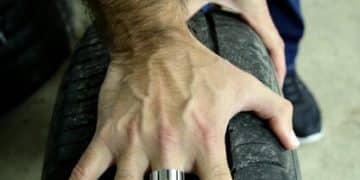Maximize Your Road Trip Budget: 7 Proven Fuel-Saving Strategies

Discover seven actionable fuel-saving strategies to maximize your road trip budget and cut costs by 15%, ensuring a more affordable and enjoyable adventure.
Planning a road trip is exciting, but the costs can quickly add up. If you’re looking to maximize your road trip budget: 7 fuel-saving strategies proven to cut costs by 15%, you’re in the right place. By implementing these tactics, you can enjoy your travel while keeping your expenses in check.
Plan Your Route Strategically
Effective route planning is the first step to slashing fuel costs. By carefully mapping your journey, you can avoid unnecessary detours, traffic congestion, and challenging terrains that guzzle gas. A little planning goes a long way in saving money.
Use GPS Apps Wisely
Navigation apps like Google Maps or Waze offer real-time traffic updates and suggest the most efficient routes. However, blindly following these apps can sometimes lead you astray. Here’s how to use them effectively:
- Check Alternative Routes: Always compare the app’s recommended route with alternative paths. Sometimes a slightly longer route on paper can be faster and more fuel-efficient in reality due to less stop-and-go traffic.
- Consider Road Conditions: Apps might not always account for road quality. Paved highways are generally more fuel-efficient than gravel or poorly maintained roads.
- Avoid Peak Traffic Hours: Plan your drive to avoid rush hour. Sitting in traffic burns fuel without covering any distance. Leave early or late to bypass congested areas.
Minimize Unnecessary Mileage
Reducing extra miles is a simple yet effective way to save fuel. Combine errands into a single trip, rather than making multiple short trips. This not only saves fuel but also reduces wear and tear on your vehicle.
In summary, strategic route planning can significantly reduce fuel consumption. By leveraging GPS apps intelligently and reducing unnecessary mileage, you’ll be on your way to a more budget-friendly road trip.
Maintain Optimal Tire Pressure
Often overlooked, maintaining the correct tire pressure can greatly improve your vehicle’s fuel efficiency. Underinflated tires increase rolling resistance, causing the engine to work harder and burn more fuel. Regularly checking and inflating your tires to the recommended pressure is a simple yet impactful way to save money.

Check Tire Pressure Regularly
Make it a habit to check your tire pressure, especially before a long road trip. Aim to check the pressure at least once a week or before any significant journey. This ensures that your tires are always at the optimal level for fuel efficiency.
Understand Recommended Tire Pressure
The recommended tire pressure is typically found on a sticker inside the driver’s side doorjamb or in your vehicle’s owner’s manual. It’s crucial to adhere to these guidelines rather than simply inflating tires to the maximum pressure listed on the tire sidewall. The sidewall pressure is the maximum the tire can handle, not necessarily the ideal pressure for your vehicle.
- Use a Reliable Tire Pressure Gauge: Invest in a quality tire pressure gauge for accurate readings. Avoid relying solely on gas station air pumps, as their gauges can be inaccurate.
- Check When Tires Are Cold: Tire pressure increases with heat. Check and adjust tire pressure when the tires are cold (i.e., before driving or after the vehicle has been parked for a few hours) for the most accurate reading.
- Adjust for Load: If you’re carrying a heavy load, slightly increasing tire pressure (within the recommended range) can improve fuel efficiency and handling.
Maintaining correct tire pressure is an easy and effective way to boost your fuel efficiency on a road trip. Regular checks and adjustments ensure you’re not wasting fuel due to increased rolling resistance, contributing to significant savings over the course of your journey.
Drive at a Consistent Speed
Maintaining a consistent speed is crucial for fuel efficiency. Frequent acceleration and braking consume more fuel than steady driving. By adopting a smoother driving style, you can significantly reduce fuel consumption and save money.
Avoid Aggressive Driving
Aggressive driving habits, such as speeding, rapid acceleration, and hard braking, can decrease fuel efficiency by as much as 33% at highway speeds and 5% around town. Avoiding these habits can lead to considerable savings on a long road trip.
Use Cruise Control
Cruise control is your ally on long, flat stretches of highway. It helps maintain a consistent speed, preventing unintentional speeding or slowing down, both of which can waste fuel. Engaging cruise control can lead to noticeable fuel savings.
- Monitor Your Speed: Pay attention to your speedometer and try to maintain a steady speed. Avoid sudden bursts of acceleration or unnecessary braking.
- Anticipate Traffic: Look ahead and anticipate changes in traffic flow. Slow down gradually rather than braking suddenly when approaching slower vehicles or traffic lights.
- Maintain a Safe Following Distance: Give yourself plenty of room between your vehicle and the one in front of you. This provides ample time to react to changes in traffic without needing to brake hard.
Driving at a consistent speed not only saves fuel, but also enhances safety on the road. By avoiding aggressive maneuvers and utilizing cruise control, drivers can achieve significant fuel savings and enjoy a smoother, more relaxed driving experience.
Lighten Your Load
The heavier your vehicle, the more fuel it consumes. Extra weight puts a strain on the engine, forcing it to work harder and burn more fuel. By lightening your load, you can improve fuel efficiency and reduce costs.
Remove Unnecessary Items
Before embarking on your road trip, take some time to declutter your vehicle. Remove any unnecessary items from the trunk, backseat, and roof rack. Even small items can add up and impact fuel efficiency.
Pack Smartly
When packing for your trip, prioritize essential items and leave behind anything you can live without. Use lightweight luggage and pack efficiently to minimize the overall weight. Distribute the weight evenly throughout the vehicle to maintain balance and handling.

- Roof Racks and Cargo Carriers: If you must use a roof rack or cargo carrier, ensure it is aerodynamic and properly installed. Remove it when not in use, as it can significantly increase drag and fuel consumption.
- Empty the Trunk: Avoid using your trunk as a storage space for items you don’t need on your trip. A cluttered trunk adds unnecessary weight and reduces fuel efficiency.
- Travel Light: Pack only what you need. Avoid bringing extra clothing, gear, or equipment that you won’t use. Consider renting or borrowing items at your destination if possible.
Lightening your load is a straightforward way to improve your vehicle’s fuel efficiency. By removing unnecessary items and packing smartly, you’ll reduce the strain on your engine and save money on fuel throughout your road trip.
Avoid Idling
Idling wastes fuel and contributes to air pollution. When your engine is running but your vehicle isn’t moving, you’re essentially burning fuel for nothing. Avoiding unnecessary idling can lead to significant fuel savings.
Turn Off the Engine
If you anticipate being stopped for more than a minute or two, turn off your engine. Restarting the engine consumes less fuel than idling for an extended period. Modern vehicles are designed to handle frequent starts and stops without causing damage.
Plan Your Stops
Anticipate your stops and avoid unnecessary idling. For example, instead of circling the block waiting for someone, park and wait. Consider using drive-through services when possible to minimize idling time.
- Avoid Warm-Up Idling: Except in very cold weather, there’s no need to idle your engine to warm it up. Start driving gently, and the engine will warm up more efficiently while in motion.
- Consider Traffic Lights: If you see a long line of cars at a red light, consider turning off your engine if it’s safe to do so. You’ll save fuel and reduce emissions.
- Be Mindful of Drive-Thrus: While drive-thrus can be convenient, they often involve idling while waiting in line. Consider parking and going inside instead to avoid unnecessary idling.
Avoiding idling is an effective way to save fuel and reduce pollution. By turning off your engine when stopped and planning your stops efficiently, you’ll contribute to a greener environment and save money on fuel.
Use the Right Grade of Fuel
Using the correct grade of fuel is essential for optimal engine performance and fuel efficiency. Check your vehicle’s owner’s manual for the recommended fuel type and stick to it. Using a higher grade of fuel than necessary won’t improve performance and will only waste money.
Check Your Owner’s Manual
Consult your vehicle’s owner’s manual to determine the recommended fuel type. Some vehicles require premium fuel, while others can run on regular unleaded. Using the correct fuel grade ensures optimal engine performance and fuel efficiency.
Understand Octane Ratings
Octane ratings measure a fuel’s resistance to knocking or pinging. Higher octane fuels are designed for vehicles with high-compression engines. If your vehicle doesn’t require premium fuel, using it won’t provide any benefits.
- Avoid Overspending: Don’t assume that higher-priced fuels are always better. If your vehicle is designed to run on regular unleaded, there’s no need to spend extra money on premium fuel.
- Consider Ethanol Content: Some fuels contain ethanol, which can affect fuel efficiency. Check the ethanol content and choose fuels with lower ethanol levels if possible.
- Research Fuel Additives: Be cautious of fuel additives that claim to improve fuel efficiency. Many of these products are ineffective and can even damage your engine.
Using the right grade of fuel is a simple yet important way to save money on your road trip. By following your vehicle’s manufacturer recommendations and avoiding unnecessary upgrades, you’ll optimize your engine’s performance and fuel efficiency.
Service Your Vehicle Regularly
Regular vehicle maintenance is crucial for optimal fuel efficiency. A well-maintained vehicle runs more smoothly and efficiently, burning less fuel. Neglecting maintenance can lead to increased fuel consumption and costly repairs.
- Schedule Regular Maintenance: Follow your vehicle’s recommended maintenance schedule. This includes oil changes, filter replacements, tune-ups, and other essential services.
- Check Fluid Levels: Regularly check and top off fluid levels, including oil, coolant, brake fluid, and power steering fluid. Low fluid levels can affect engine performance and fuel efficiency.
- Replace Air Filters: A dirty air filter restricts airflow to the engine, reducing performance and fuel efficiency. Replace the air filter according to the manufacturer’s recommendations.
Keep Your Engine Tuned
A properly tuned engine runs more efficiently and burns less fuel. Schedule regular tune-ups to ensure that your engine is running smoothly. This includes checking spark plugs, ignition timing, and other engine components.
Inspect Brakes and Suspension
Faulty brakes and suspension can increase rolling resistance and reduce fuel efficiency. Have your brakes and suspension inspected regularly to ensure they are in good working condition.
Regular vehicle maintenance is an investment in your vehicle’s long-term health and fuel efficiency. By staying on top of maintenance tasks and addressing any issues promptly, you’ll ensure that your vehicle runs smoothly and efficiently, saving you money on fuel and repairs.
| Key Point | Brief Description |
|---|---|
| 🗺️ Strategic Route Planning | Optimize routes with GPS to avoid traffic and reduce mileage. |
| ⛽ Optimal Tire Pressure | Maintain correct tire pressure to reduce rolling resistance. |
| 🚗 Consistent Speed | Drive at a consistent speed to avoid aggressive maneuvers. |
| ⚖️ Lighten Your Load | Remove unnecessary items to reduce strain on the engine. |
Frequently Asked Questions
Strategic route planning helps avoid traffic congestion, unnecessary detours, and challenging terrains that increase fuel consumption. Using GPS apps wisely and checking alternative routes can further optimize your fuel savings.
Maintaining optimal tire pressure reduces rolling resistance, which in turn decreases the engine’s workload to move the vehicle. Regular checks ensure tires are at the recommended pressure, improving fuel efficiency.
Aggressive driving habits such as speeding, rapid acceleration, and hard braking significantly reduce fuel efficiency. Adopting a smoother and more consistent driving style can save a considerable amount on fuel.
The heavier the vehicle, the more fuel it consumes. Removing unnecessary items and packing efficiently minimizes the overall weight, reducing strain on the engine and improving fuel efficiency throughout the road trip.
Idling wastes fuel and contributes to pollution. When a vehicle is idling, the engine is running but not moving, burning fuel without covering any distance. Turning off the engine when stopped saves fuel and reduces emissions.
Conclusion
By implementing these seven fuel-saving strategies, you can significantly maximize your road trip budget and enjoy a more affordable adventure. From careful planning and vehicle maintenance to smart driving habits, these tips are proven to cut costs and ensure a smoother, more enjoyable journey.

